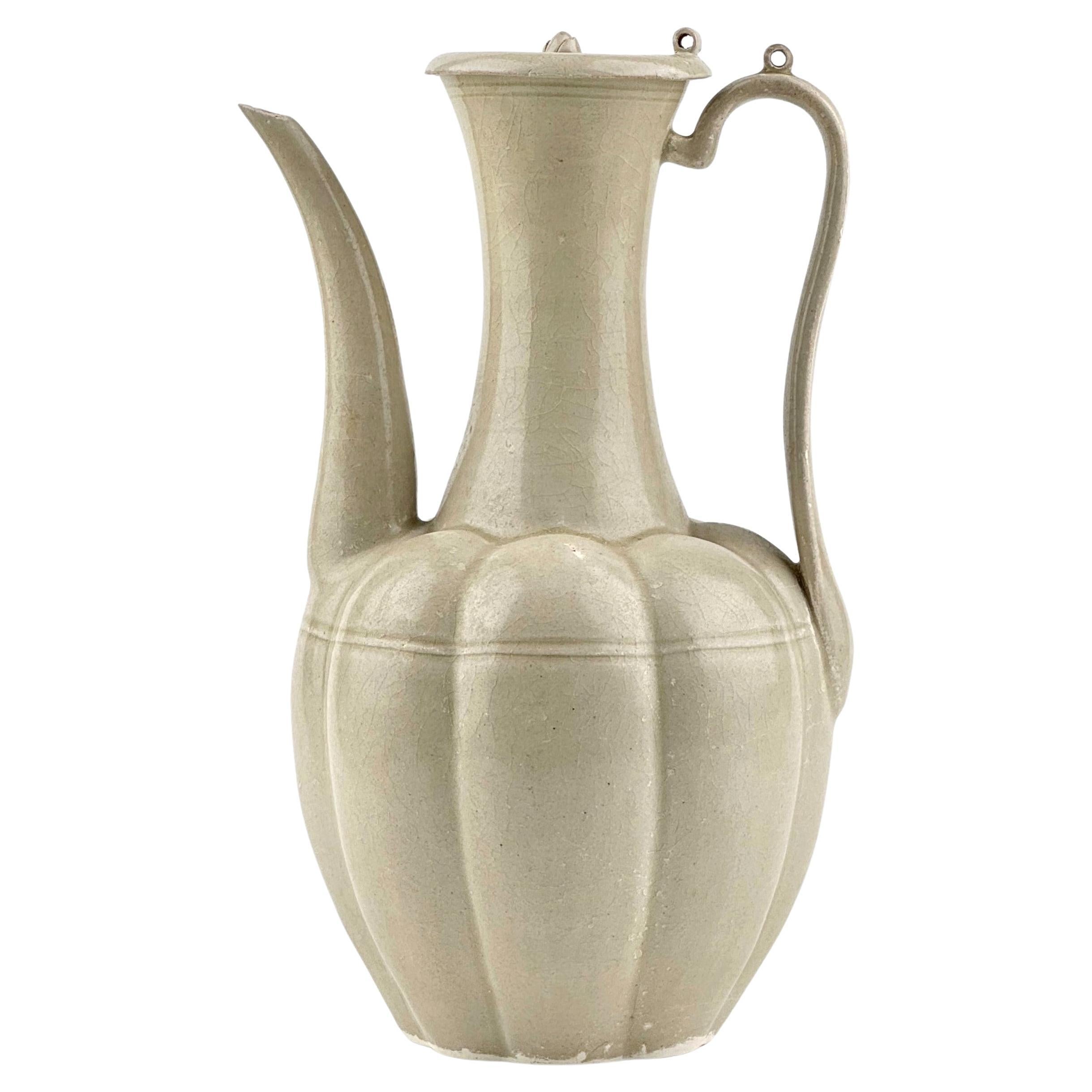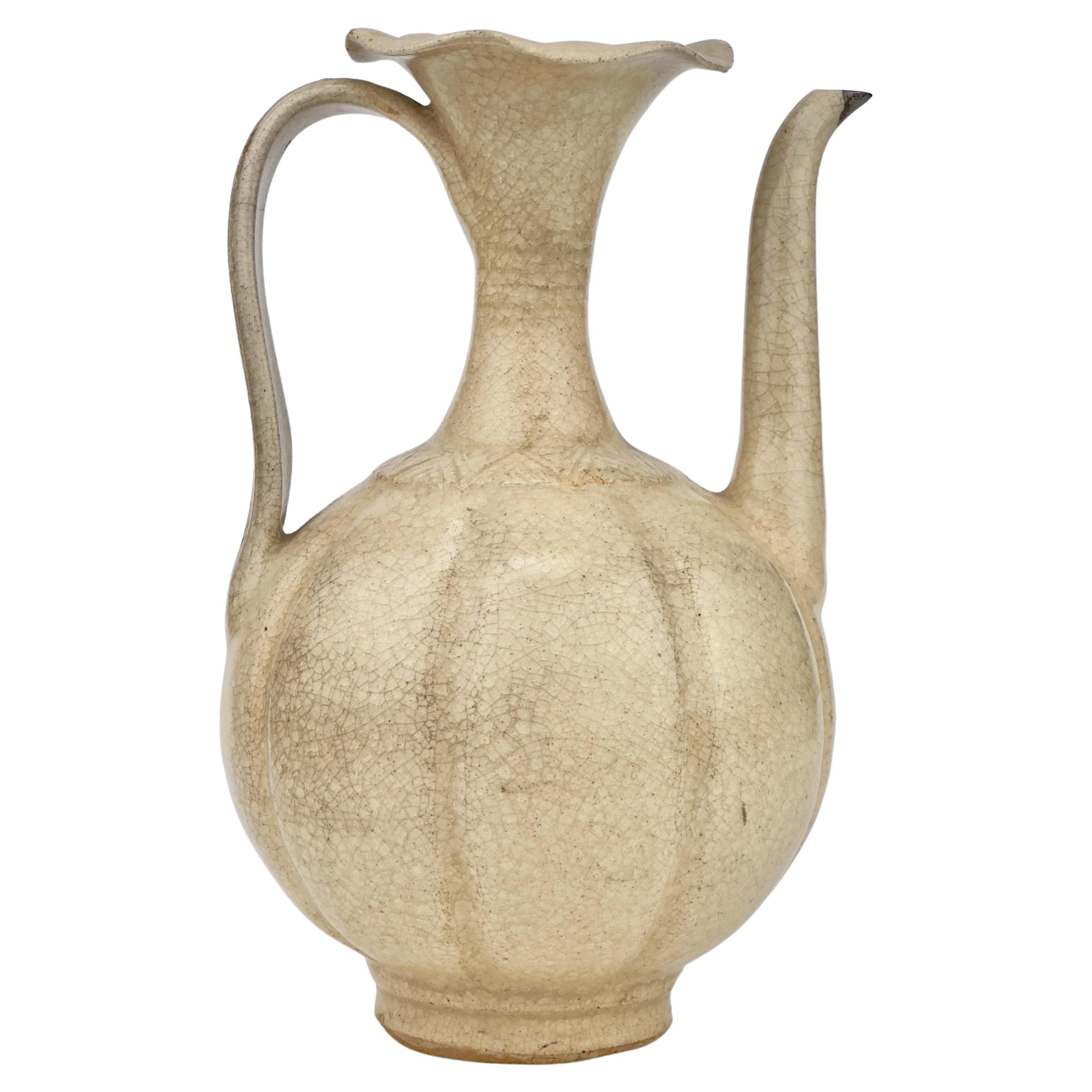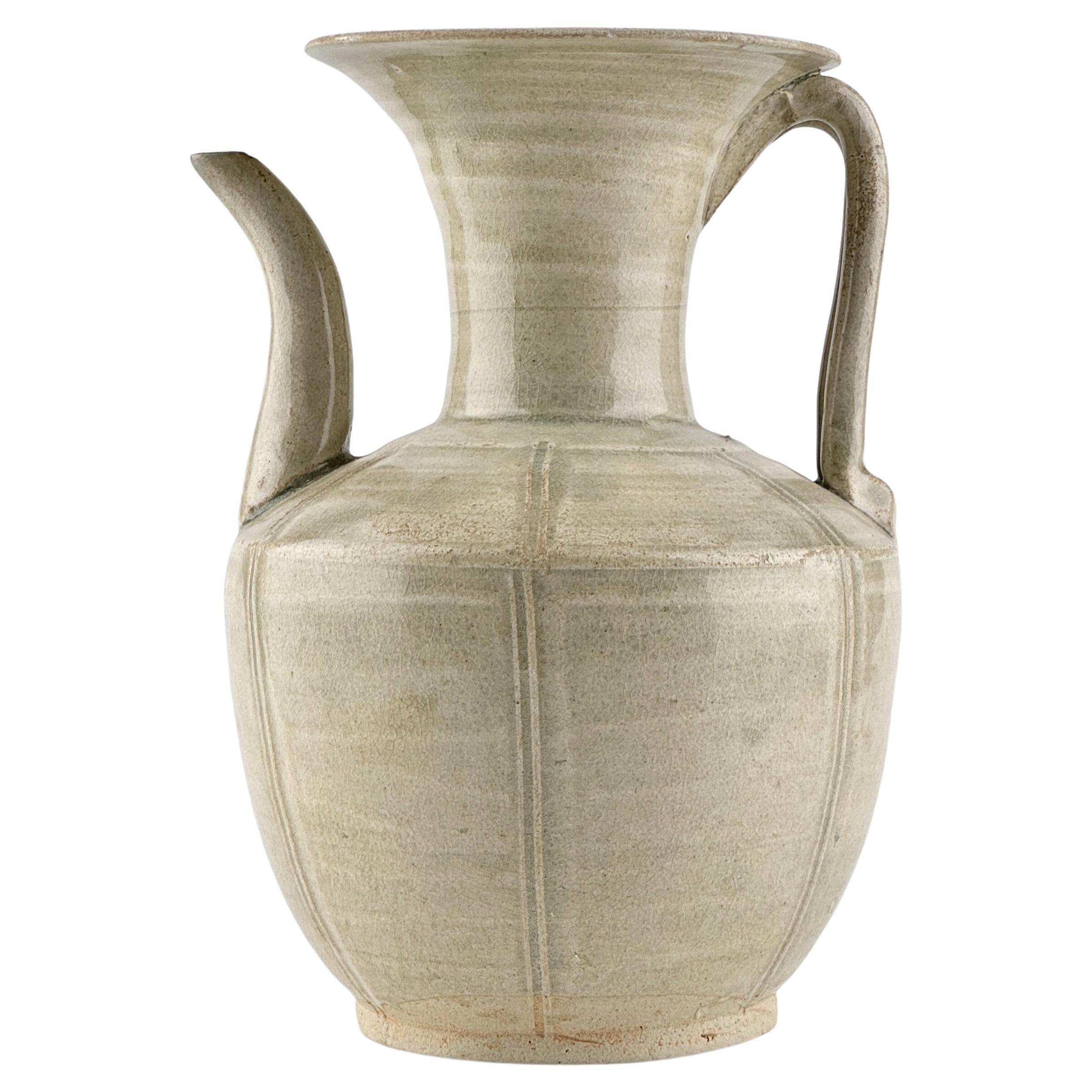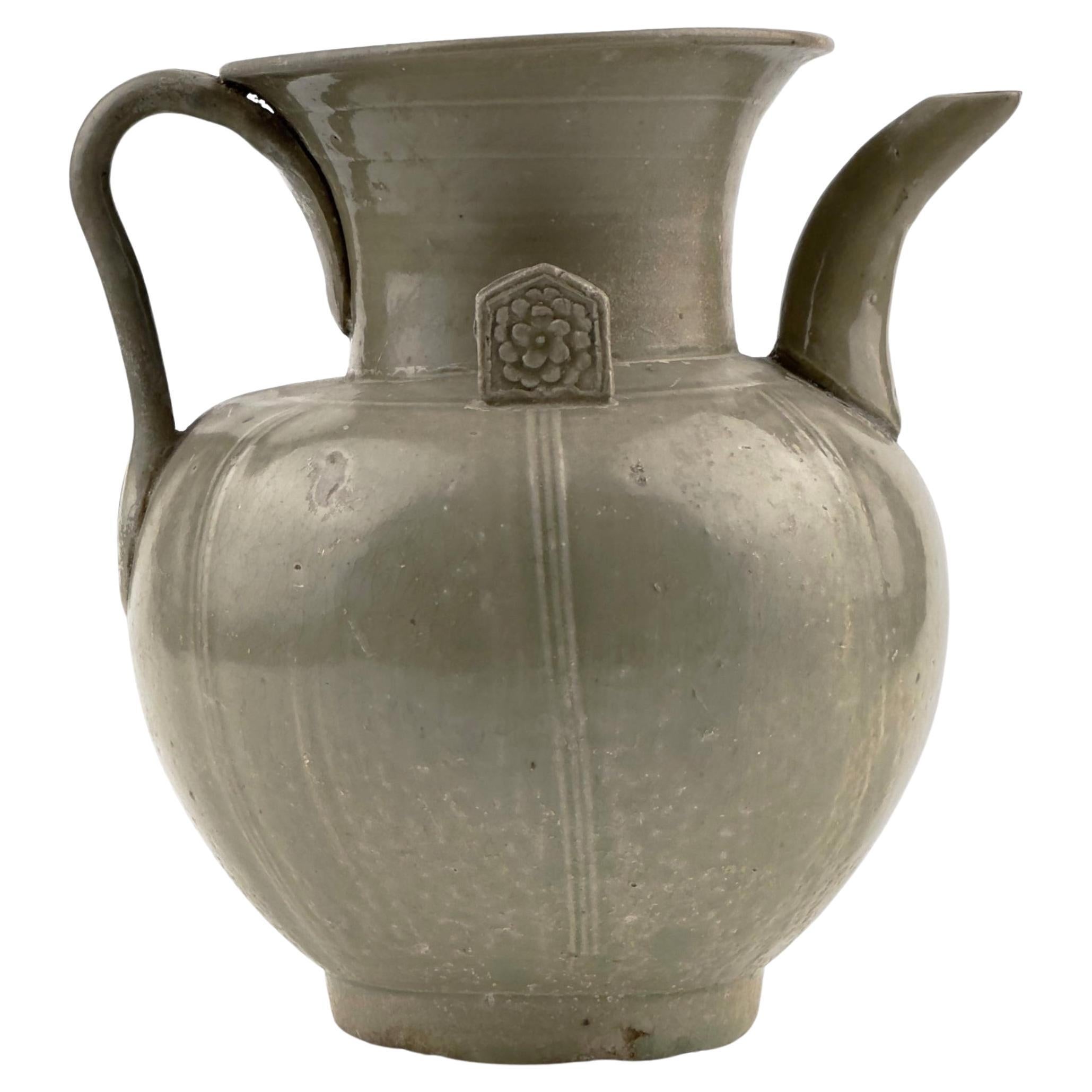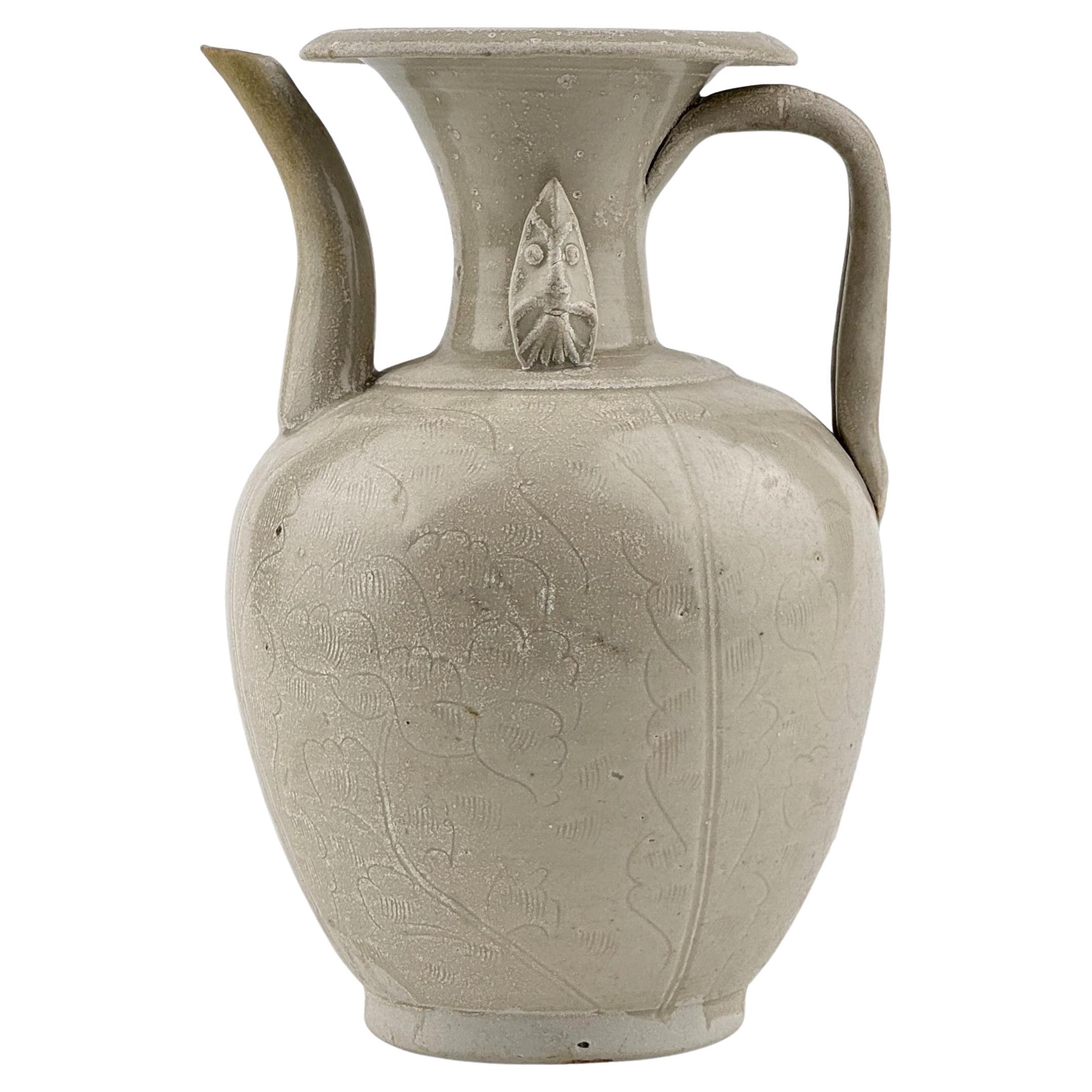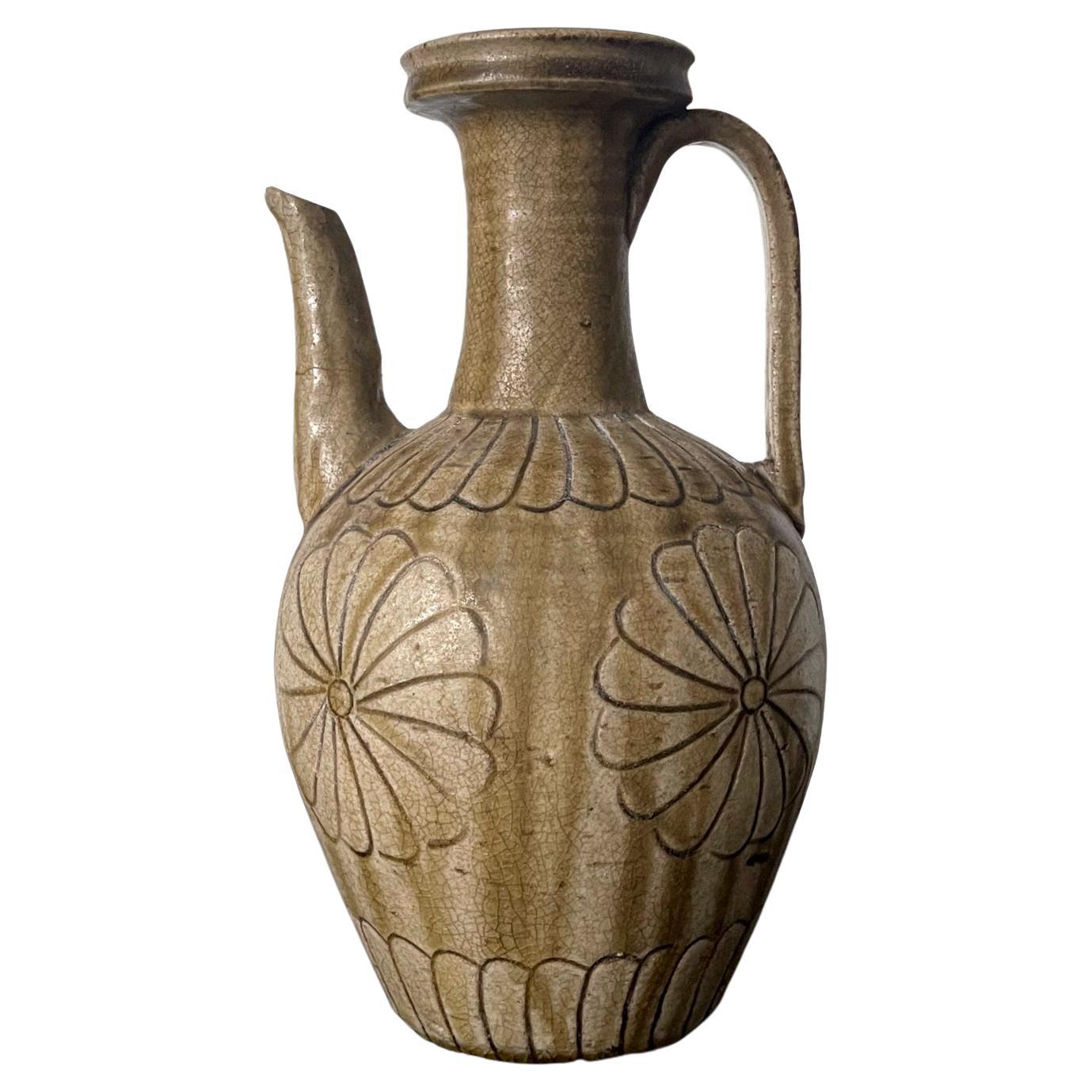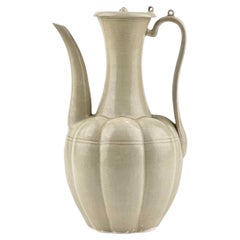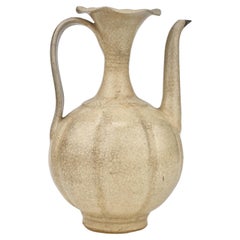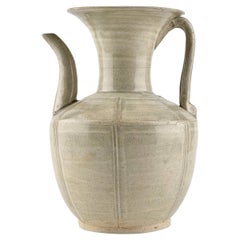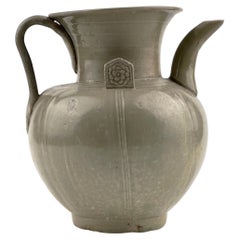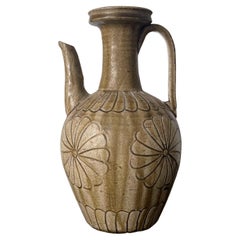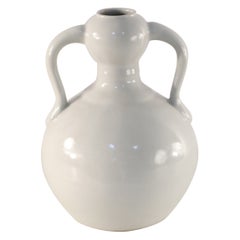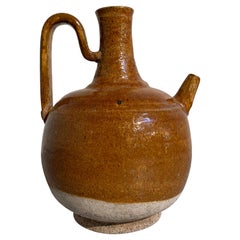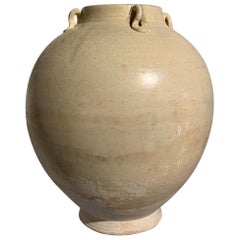Items Similar to Rare Cream Glazed Ding yao Ewer and Cover, Song Dynasty (960~1279)
Want more images or videos?
Request additional images or videos from the seller
1 of 14
Rare Cream Glazed Ding yao Ewer and Cover, Song Dynasty (960~1279)
$9,950
$19,90050% Off
£7,607.30
£15,214.6150% Off
€8,762.08
€17,524.1650% Off
CA$13,943
CA$27,88650% Off
A$15,566.05
A$31,132.1050% Off
CHF 8,156.38
CHF 16,312.7550% Off
MX$190,543.72
MX$381,087.4450% Off
NOK 103,586.05
NOK 207,172.1150% Off
SEK 97,668.50
SEK 195,336.9950% Off
DKK 65,392.29
DKK 130,784.5850% Off
Shipping
Retrieving quote...The 1stDibs Promise:
Authenticity Guarantee,
Money-Back Guarantee,
24-Hour Cancellation
About the Item
This is a Song Dynasty ceramic ewer, exhibiting the characteristic simplicity and elegance of the period. The ewer's form is sturdy with a full-bodied base that tapers gently to a narrow neck, expanding again at the mouth. The handle is gracefully arched, complementing the smooth, elongated spout. Its cream-colored glaze is understated yet luminous, with subtle vertical lines suggesting a segmentation that adds to the visual texture. Such pieces are highly valued for their refined aesthetic and the technical mastery they represent in ceramic art from the Song era, often reflecting the balance between functionality and artistic beauty.
Period : Song dynasty
Type : Creamy-white Ding yao glaze Ewer
Provenance : Acquired in late 1990s from Hongkong
Height : 17.8cm
Condition : Excellent
* Song Dynasty Cream-glazed Ware
Song Dynasty cream-colored glaze pottery, often referred to as Ding ware, is celebrated for its elegant simplicity and subtle beauty. The glaze is typically an ivory or warm white tone, known for its smoothness and lustrous, almost satin-like finish. These ceramics may feature incised or molded decorations, but the ornamentation is generally restrained, allowing the pure form and quality of the glaze to dominate. The glaze often pools slightly in crevices, accentuating the piece's contours. The body beneath the glaze is usually fine and white, made from a high-quality kaolin clay. Song Dynasty potters were adept at achieving a thin, uniform glaze that adheres tightly to the body, which would sometimes show a fine crackle pattern, highly prized among collectors and connoisseurs.
- Dimensions:Height: 7.01 in (17.8 cm)Diameter: 1.89 in (4.8 cm)
- Style:Chinese Export (Of the Period)
- Materials and Techniques:Ceramic,Glazed
- Place of Origin:
- Period:
- Date of Manufacture:960-1279
- Condition:Minor fading.
- Seller Location:seoul, KR
- Reference Number:1stDibs: LU9577237756822
About the Seller
4.8
Gold Seller
Premium sellers maintaining a 4.3+ rating and 24-hour response times
Established in 1999
1stDibs seller since 2023
38 sales on 1stDibs
Typical response time: <1 hour
- ShippingRetrieving quote...Shipping from: seoul, Korea South
- Return Policy
Authenticity Guarantee
In the unlikely event there’s an issue with an item’s authenticity, contact us within 1 year for a full refund. DetailsMoney-Back Guarantee
If your item is not as described, is damaged in transit, or does not arrive, contact us within 7 days for a full refund. Details24-Hour Cancellation
You have a 24-hour grace period in which to reconsider your purchase, with no questions asked.Vetted Professional Sellers
Our world-class sellers must adhere to strict standards for service and quality, maintaining the integrity of our listings.Price-Match Guarantee
If you find that a seller listed the same item for a lower price elsewhere, we’ll match it.Trusted Global Delivery
Our best-in-class carrier network provides specialized shipping options worldwide, including custom delivery.More From This Seller
View AllA Rare Cream-Glazed Ding yao Ewer and Cover, Northern Song Dynasty (960–1127)
Located in seoul, KR
The octagonal lobed ovoid body rising from a short spreading foot to a tall trumpet neck, set at the shoulder with a tall curved spout and to the other side with a tall strap handle, the dished cover surmounted with a ruyi-shaped finial, covered overall in a creamy-white glaze. Compared to other similar types of Northern Song Dynasty ceramics, this piece is extremely elegant in shape. It most closely resembles the Qingbai porcelain in the collection of The Museum of Oriental Ceramics in Osaka.
Period : Northern Song dynasty(960~1127)
Type : Creamy-white Ding yao glaze Ewer
Provenance : Acquired in 1999, Hongkong
Reference : THE MET Accession Number: 18.57.1
Sotheby's London 2018 - St George Street Sale Asian Art - Lot 208
* Song Dynasty Ding-Yao Ware
Song Dynasty Ding Yao porcelain holds a significant place in Chinese ceramic art, specifically as a type of white porcelain produced during the Song Dynasty. Produced predominantly during the mid to late Song Dynasty, Ding Yao ceramics are renowned for their delicate and intricate features.
Ding Yao ceramics were primarily crafted from clay rich in white minerals and fired at high temperatures to achieve a durable and lustrous surface. One distinctive characteristic of this serene white ceramic is the presence of silver or gold-colored splashes of glaze, often created using a mineral called galena. Galena, with its lustrous appearance, was suitable for creating fine patterns and intricate decorations.
These ceramics frequently feature delicate carvings, floral motifs, or subtle decorations. While commonly used for utilitarian purposes such as tableware, Ding Yao porcelain also served as a medium for artistic expression, producing many artworks. The production of Ding Yao ceramics was relatively limited, and surviving pieces are considered rare and valuable art pieces...
Category
Antique 15th Century and Earlier Hong Kong Antiquities
Materials
Ceramic
$17,970 Sale Price
70% Off
Rare annamese cream glazed ewer, Vietnam, 11-15th century
Located in seoul, KR
Famous annamese cream glazed ceramic ewer covered with a cream glaze. Traces of excavation are clearly visible in the glaze.
Dates : Presumably Ly Dynasty (11-13th century)
Region ...
Category
Antique 15th Century and Earlier Vietnamese Antiquities
Materials
Ceramic, Stoneware
A Zhejiang Porcelain Ewer, Northern Song Dynasty
Located in seoul, KR
The oviform body is divided into few lobes. All covered in a finely crackled pale olive-green glaze. The surface and glaze characteristics are definitive, confirming the authenticity...
Category
Antique 15th Century and Earlier Hong Kong Antiquities
Materials
Porcelain
$2,925 Sale Price
35% Off
Yue Celadon Ewer, Late Tang-Northern Song Dynasty
Located in seoul, KR
This Yue ware celadon ewer features a gracefully rounded body that expands smoothly, complemented by a wide, flaring mouth. The translucent olive-green glaze envelops the surface, en...
Category
Antique 15th Century and Earlier Hong Kong Tang Antiquities
Materials
Celadon
$3,150 Sale Price
30% Off
Qingbai Melon form water ewer, Five Dynasties-Northern song dynasty
Located in seoul, KR
The oviform body is divided into few lobes, and the shoulder is applied with a pair of small loops molded.
Period : Five Dynasties-Song Dynasty(907~1279)
Type : Ewer
Medium : Zheji...
Category
Antique 15th Century and Earlier Hong Kong Antiquities
Materials
Porcelain
$1,495 Sale Price
50% Off
Celadon Ewer with Straight Handle, Tang to Northern Song Dynasty
Located in seoul, KR
Celadon-glazed ewer characterized by its simple and functional design. The piece features a straight handle extending horizontally from the body and a short spout for pouring liquids...
Category
Antique 15th Century and Earlier Hong Kong Tang Antiquities
Materials
Celadon
$2,925 Sale Price
35% Off
You May Also Like
Japanese Ko-Seto Stoneware Ewer with Carved Design
Located in Atlanta, GA
On offer is a rare Ko-seto (old seto) stoneware ewer from Kamakura period (12-14th century) Japan. The exceptionally heavily potted ewer is made of stoneware. The main body was likely hand-coiled with individually built handle, sprout and wheel-made neck and mouth assembled. It takes the basic form from the contemporary Chinese ewer...
Category
Antique 15th Century and Earlier Japanese Archaistic Ceramics
Materials
Stoneware
Chinese Off-White Gourd-Shaped Double Ear Porcelain Vase
Located in Queens, NY
Chinese off-white porcelain, gourd-shaped double ear vase decorated in highly subtle tonal lemons, swirling clouds and writing, and accented with two shoulde...
Category
20th Century Chinese Chinese Export Vases
Materials
Porcelain
Chinese Liao Dynasty Amber Glazed Stoneware Strap Handle Ewer, 11th Century
Located in Austin, TX
A lovely Chinese amber glazed pottery pouring vessel, Liao Dynasty (907 to 1125 AD).
The vessel featuring a globular body with an elongated neck sligh...
Category
Antique 15th Century and Earlier Chinese Tang Ceramics
Materials
Stoneware
Chinese Sui Dynasty White Glazed Jar with Loop Handles, 6th-7th Century
Located in Austin, TX
A simple and elegant Chinese high fired white glazed jar with four lug handles, Sui Dynasty (581 to 618), probably Heibei Province.
The voluptuou...
Category
Antique 15th Century and Earlier Chinese Tang Ceramics
Materials
Stoneware
Provincial Chinese Glazed Water Jug, c. 1850
Located in Chicago, IL
This 19th-century kitchen vessel is coated inside and out with a dark brown glaze that clings to its ribbed sides with subtle color variation. Designed for serving water or tea, the squat jar features a narrow neck, small strap handles, and a short spout for pouring. The rounded shoulders are brushed with simple linework in a contrasting light brown glaze. Textured with pitted wear and other imperfections, the rustic vessel is wonderful as an unusual vase...
Category
Antique Mid-19th Century Chinese Qing Ceramics
Materials
Ceramic
Very Rare Ming Dynasty Porcelain Ewer with Ottoman Gem-Set Tombak Mounts
Located in London, GB
Very rare Ming dynasty porcelain ewer with ottoman gem-set tombak mounts
Chinese and Turkish, 16th/17th century
Measures: Tombak: height 20cm,...
Category
Antique 16th Century Chinese Ming Bottles
Materials
Multi-gemstone, Brass
